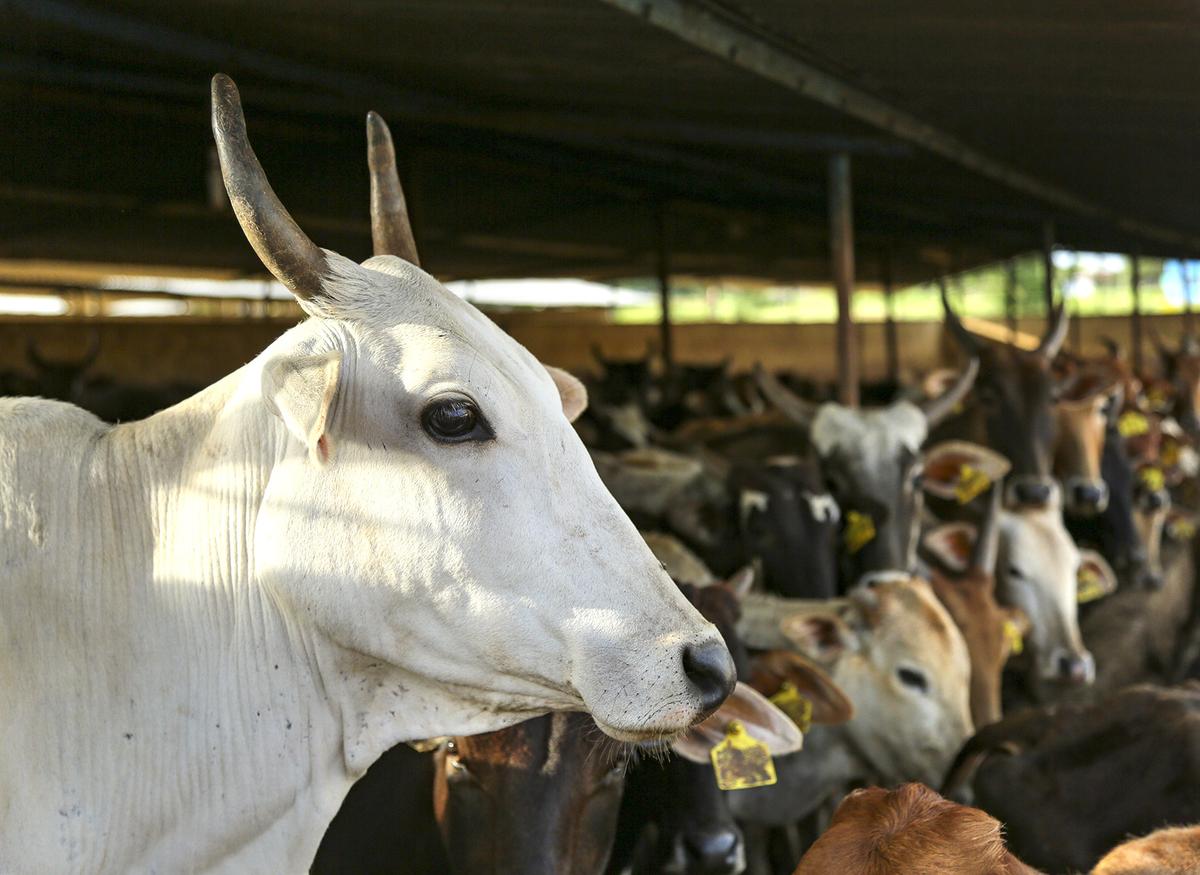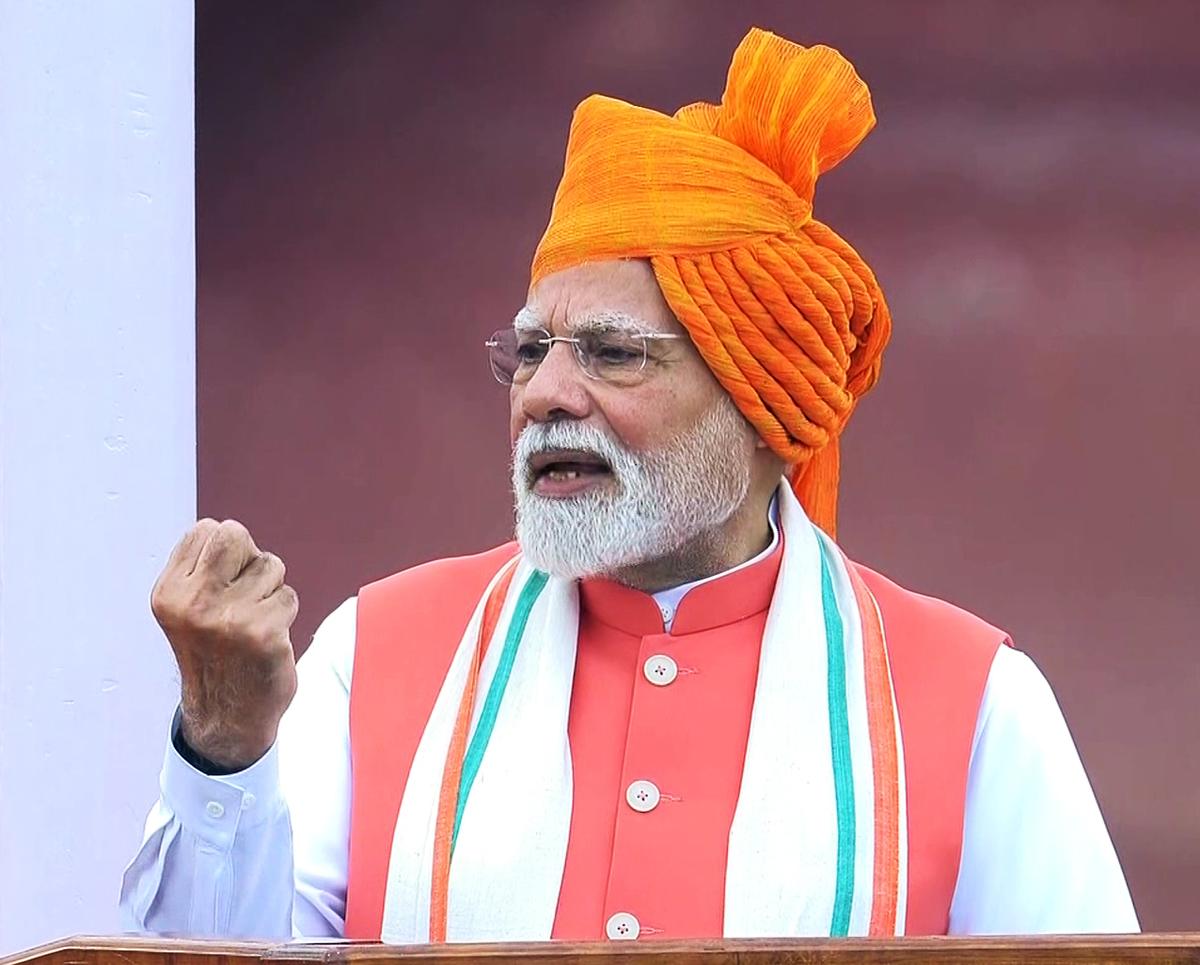(This is the latest edition of the Political Line newsletter curated by Varghese K. George. The Political Line newsletter is India’s political landscape explained every week. You can subscribe here to get the newsletter in your inbox every Friday.)
Culture influences market and diplomacy. But how much is too much on this count?
A slice of the stalemate in trade talks between India and the U.S. is related to the U.S. demand for opening up India’s farm sector. The U.S. wants to export more of its dairy and poultry products to India. India resists this demand. Prime Minister Narendra Modi has said he would make personal sacrifices, if required, to ensure that farmers are protected.
The proportion of population dependent on agriculture reveals one of the most striking differences between India and the United States, highlighting their vastly different economic structures and development stages. India has nearly half of its workforce engaged in agriculture, while the United States has only less than two percent directly employed in farming — representing a 32-fold difference in agricultural employment dependency. In India’s case, agriculture contributes roughly 18 percent of GDP but nearly half of the population is dependent on it. Farmers are a powerful political constituency in both India and the United States. Food is also a question of national security. Post-Covid fears related to self-sufficiency in critical areas have further strengthened the case for national food markets insulated from global disruptions.
India’s resistance to allowing American farm produce in its market rests on three reasons. The first, as mentioned above, is that too many people are dependent on agriculture, and opening up the sector to American products could render them vulnerable. The second is national security. The third concerns apparently cultural reasons — American cows may be fed meat products such as chicken waste, and this is unacceptable to India. Milk and other products from a cow whose food chain is not clearly plant-based do not meet Indian standards. Whether such determination is consistently applied across all milk produced within India is beside the point. Cultural reasons are relevant to market decisions in all societies. For instance, some Muslim countries or shops may not sell pork; among the GCC countries, pork is available in the UAE and Bahrain, while in others it is not. In large parts of India now, beef is legally banned; in many parts, such as southern India, West Bengal, and the northeastern states, it is widely consumed by all social groups including Hindus. Cultural barriers to global trade are not new in India. Crossing the seas was once taboo — Gandhi had to do penance to be readmitted to his Modh Vaniya caste, which had ostracised him for doing so.
Of the three issues at play in trade in agriculture, perhaps the easiest to change is the competency of the sector. But the cultural politics around the cow and the requirements of the agriculture sector often come into conflict. At least 20 out of 28 states have some form of laws to protect cows, which effectively translates into restrictions on the trade and transportation of cattle, including buffaloes. In the last decade or so, many states have enforced these laws aggressively, and vigilantes targeting even legal cattle trade often go scot-free. Simultaneously, a whole network of rent-seeking has emerged in the guise of cow protection, as the state spends massive amounts to shelter unproductive cows that farmers do not want to keep. It is not the case that meat production has ended; India’s export of buffalo meat has been growing in the last three years at around four percent annually. What has happened is that cattle and leather trade have been pushed into a grey zone of legality, inflicting costs and losses for all involved and creating new rent-seeking opportunities.
You can read about a sample of such restrictions here.

Farmers are paying a huge price for this — on the one hand, the difficulty in disposing unproductive cattle, and on the other, the problem of free-roaming cattle destroying their crops.
Cow protection in India was linked historically to farming practices of an earlier era. Those factors have changed due to technology and other developments. Yet, productivity in India’s agriculture sector remains entangled in the religious association many people have with cows. The cow has long functioned as a symbol in Hindu-Muslim rivalry in the subcontinent. Hindu leaders such as Dayananda Saraswati made cow protection a tool for popular consolidation antagonistic to Muslims in the 19th century. Some Muslim leaders, such as Pir Abu Bakr in Bengal in the early 20th century, argued that cow sacrifice was an essential practice of Islam. Whether cow sacrifice is indeed an essential practice of Islam has been the subject of several litigations in independent India as well.
While India grapples with global uncertainties created by political and technological upheavals, it might also make sense to review its priorities at home.
The Fear of the Future People
Prime Minister Narendra Modi has now raised the spectre of a demographic threat to India in his Independence Day speech. He said there was a conspiracy to change the demographic profile of India.
You can read The Hindu editorial on this speech here.
Does demographic composition determine the character of a nation? Leaving that question for a future discussion, here are some quick adjacent thoughts.
Variations in population growth across communities and geographies pose challenges for governance and national identity. It is one thing to say that everyone is an individual citizen regardless of social location, faith, or ethnicity. But India’s governance structure acknowledges the principle of group identities while providing special protections for religious and linguistic minorities, Dalits, backward classes, tribes, etc. Collective identities are not anathema to India’s constitutional scheme; in fact, they are central to it.
Political contestations have historically been framed in India around the numerical strength of communities. That history warrants discussion separately, but to cite a well known example, the 15% and 7.5% reservations for Scheduled Caste and Scheduled Tribe communities, respectively, were based on their proportion in the population. As the proportion of their population changes, so will their representation. This will be among the issues in the next delimitation of parliamentary constituencies in India.

Currently, there are two distinct divergences in population growth in India. First, the north-central regions have higher birth rates than peninsular and western India. Second, Muslims have a higher birth rate than Hindus. Among Hindus, upper castes have lower birth rates compared to other groups. While the BJP and its supporters try to highlight the Hindu-Muslim divergence in population growth, many others, particularly parties in the South, are more worried about the regional divergence in population growth. It is this regional divergence that makes the next delimitation an unsettling prospect for many regions. Population management has to be a secular task, and all communities should participate in it.
While the BJP constantly talks up an Islamic demographic threat, there are Muslim actors who acknowledge and even amplify it. Last year, a Muslim Minister in West Bengal said Muslim population was growing fast and would soon become a majority. The ruling Trinamool Congress distanced itself from the statement.
Federalism Tract: Notes on Diversity
This article by Tamil Nadu Chief Minister M. K. Stalin discusses how India is home to many nationalities and emphasizes the importance of linguistic diversity as a defining feature of India. It argues that in a true federal system, states should not have to protest, litigate, or plead for their rightful share of revenues.
Governors are taking their role as chancellors of State universities too seriously, which is roiling the higher education sector. Read our editorial on the ongoing conflicts between Governors and State governments over university governance here.
The drive against unauthorised immigrants from Bangladesh is creating rifts within India, as any Bengali-speaking individual can end up as a target of police action.
Published – August 16, 2025 10:47 pm IST